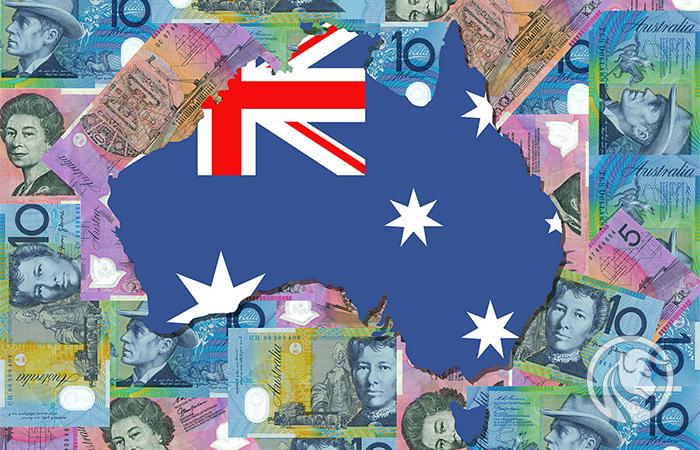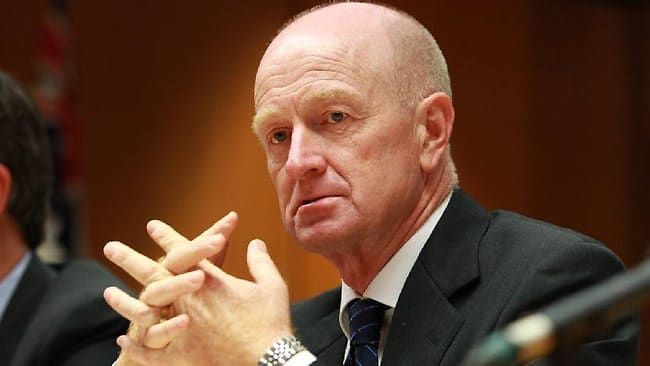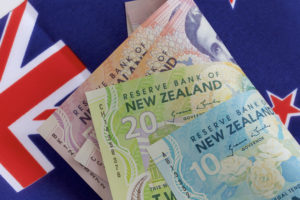Reserve Bank of Australia (RBA) - what is the Reserve Bank of Australia
Central Banks they play a very important role in shaping stability in financial markets and national fiscal systems and related monetary policy. Today we will present you what the Reserve Bank of Australia is - abbreviated as RBA (ang. Reserve Bank of Australia).
The institution, based in Sydney, has been operating since 1960. Similarly to other central banks, it has local branches, including foreign units (among others in London and New York).
A brief history of Reserve Bank of Australia
It is worth starting with the fact that the Bank of Australia in theory has a longer history than that started in 1960. Before its official establishment, there was the institution Commonwealth Bank of Australia (from 1911), which under the Reserve Bank Act 1959 was divided into two parts. Only at this point can we talk about the official beginning of today's RBA. The idea for his calling was born in connection with the collapse of the financial sector on the smallest continent. The body appointed in this field was responsible for ensuring system stability and providing cheap financial services. The rustic shape of its predecessor RBA combined features of a central and commercial bank.
The Commonwealth Bank of Australia was not at first a national institution. Rather, it focused on providing financial services to the government and meeting the basic "operational" needs of broadly understood commercial stakeholders.
It was only World War I that confused not only Australia's prosperity, but most of all domestic debt related to high costs of conducted operations. As a result, the Commonwealth Bank of Australia has acquired a public debt management function. In the years 1914-1918 another idea was born (the creator of which was the then head of this institution - Denison Miller) to transfer the issue of Australian money to the bank. Until now, this obligation was on the treasury.
Australian Notes Board
The new entity had its beginning in 1920. It is thanks to him that they came Reserve Bank of Australia gained several additional tasks in the field of monetary policy. In fact ANB (Australian NotesNoard) was the first to perform operations on the open market. It was the sale of government securities. It's fair to say that it was ANB that got the root of the tasks that the current RBA has. Regulatory policy regarding money supply on the market rested on his shoulders then. Thanks to it, it was possible to reduce high (after the First World War) prices of goods and services and related macroeconomic indicators (keeping inflation under control).
It was only after 1924 that the Australian Notes Board was included in the composition Commonwealth Bank of Australia. Up to now it has functioned as a separate institution. Therefore, the future RBA has received additional functions directly related to the money issuing system.
A breakthrough year of 1960
A real breakthrough in the context of central banking took place in Australia in 1959, when the Reserve Bank Act was adopted. This document divided the existing institution into two separately functioning units. One of them was the Reserve Bank of Australia, whose role and tasks focused on central banking. He was authorized to service the government, debt and issuing money. In fact, it also had the authority to conduct open market operations and gained considerable autonomy in the field of "modernization" of interest rates. The second branch resulting from the Reserve Bank Act was the Commonwealth Bank of Australia. His tasks and powers focused on keeping savings deposits and greater commercialization of services, and therefore focused on settlements and operations carried out between business units and the population.
Thanks to the bank's operations, variable interest rates were introduced in Australia in the mid-60s. Another modernization of the financial system was the replacement of the Australian pound for dollar, which is today's AUD. Thanks to this, in 1983 a floating exchange rate was introduced on the smallest continent of the world. The Reserve Bank of Australia has abolished its current exchange control.
Later years (more modern, 1996-1998) resulted in the separation of supervisory functions from the bank (over financial markets and operations), to separate, appointed by the government institutions. Both APRA (Australian Prudential Regulation Authority) and PSB (Payment System Board), have received a number of powers related to controlling and ensuring the security of transaction systems.
Organizational structure
The organizational structure of the Reserve Bank of Australia is quite simple. It is based on the division of tasks that RBA deals with. However, looking from the perspective of other institutions at the central level, the organizational division in the RBA is not so complex. It consists of several committees and councils. Looks like this:
- Supervisory Board (bank policy, fiscal and monetary policy)
- Payment System Council (issues of transaction policy, payment systems)
- Audit Committee
- Remuneration Committee
- Risk Management Committee
- Executive Committee.
Head of the Bank and chairman of two Boards (Supervisory Board and Payment System) is the President of the Bank. Currently, this position is held by Glenn Stevens.
Objectives and tasks of the Reserve Bank of Australia
First of all, the bank is required to maintain financial system stability. This concept is associated with a number of smaller tasks, including maintaining a constant level of inflation. Like most Central Banks, it is also responsible for handling all payments from state institutions. It also manages the level of gold reserves and foreign exchange reserves. The monetary and fiscal policy it pursues is designed to achieve the greatest benefits for Australian dollar "users," that is, to support the Australian people. A stable currency and controlled price rise is the basis for the balanced functioning of developed countries markets.
Reserve Bank of Australia it also indirectly responds to Australian dollar production. In fact, the institution that deals with its issue is Note Printing Australia. However, its owner is RBA. Hence, we can talk about some indirectness in the issue itself, but directness in planning and controlling the size of the print.






















![Forex Club – Tax 9 – Settle tax on a foreign broker [Download the Application] Forex Club - Tax 9](https://forexclub.pl/wp-content/uploads/2024/02/Forex-Club-Podatek-9-184x120.jpg?v=1709046278)
![Trading View platform – solutions tailored to the needs of traders [Review] trading view review](https://forexclub.pl/wp-content/uploads/2024/03/trading-view-recenzja-184x120.jpg?v=1709558918)
![How to connect your FP Markets account to the Trading View platform [Guide] fp markets trading view](https://forexclub.pl/wp-content/uploads/2024/02/fp-markets-trading-view-184x120.jpg?v=1708677291)
![How to invest in ChatGPT and AI? Stocks and ETFs [Guide] how to invest in chatgpt and artificial intelligence](https://forexclub.pl/wp-content/uploads/2023/02/jak-inwestowac-w-chatgpt-i-sztuczna-inteligencje-184x120.jpg?v=1676364263)


![WeWork – the anatomy of the collapse of a company valued at $47 billion [WeWork, part II] wework bankruptcy story](https://forexclub.pl/wp-content/uploads/2024/04/wework-bankructwo-historia-184x120.jpg?v=1711729561)
![Adam Neumann – the man who screwed up Softbank [WeWork, part AND] adam neumann wework](https://forexclub.pl/wp-content/uploads/2024/04/adam-neumann-wework-184x120.jpg?v=1711728724)





![How to transfer shares to another brokerage office [Procedure description] how to transfer shares to another brokerage house](https://forexclub.pl/wp-content/uploads/2024/03/jak-przeniesc-akcje-do-innego-biura-maklerskiego-184x120.jpg?v=1709556924)

![The most common mistakes of a beginner trader - Mr Yogi [VIDEO] Scalping - The most common mistakes of a beginner trader - VIDEO](https://forexclub.pl/wp-content/uploads/2024/03/Scalping-Najczestsze-bledy-poczatkujacego-tradera-VIDEO-184x120.jpg?v=1711601376)
![Learning patience: No position is also a position - Mr Yogi [VIDEO] Scalping - Learning patience - No position is also a position - VIDEO](https://forexclub.pl/wp-content/uploads/2024/03/Scalping-Nauka-cierpliwosci-Brak-pozycji-to-tez-pozycja-VIDEO-184x120.jpg?v=1710999249)
![When to exit a position and how to minimize losses - Mr Yogi [VIDEO] Scalping - When to exit a position and how to minimize losses - VIDEO](https://forexclub.pl/wp-content/uploads/2024/03/Scalping-Kiedy-wyjsc-z-pozycji-i-jak-minimalizowac-straty-VIDEO-184x120.jpg?v=1710336731)


















